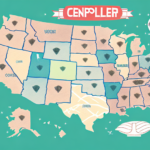Understanding FedEx's Package Size and Weight Limitations
FedEx is a leading global courier service, renowned for its reliable shipping solutions tailored for both individuals and businesses. To ensure smooth and cost-effective deliveries, it's crucial to comprehend FedEx's package size and weight restrictions. This guide provides an in-depth analysis of FedEx's shipping policies, including maximum dimensions, weight limits, measurement techniques, and strategies to optimize your packages for compliance.
Maximum Dimensions and Weight for FedEx Packages
Dimensions Limits
FedEx imposes specific size restrictions to maintain efficiency and safety in their shipping operations. The maximum dimensions for a standard FedEx package are:
- Combined Length and Girth: 165 inches
- Length Plus Girth or 2x Length: 119 inches
Exceeding these dimensions may result in additional fees or shipment refusal. For more detailed information, refer to FedEx's official shipping guidelines.
Weight Limits
The maximum allowable weight for a FedEx package is 150 pounds. Packages surpassing this weight may need to be shipped via freight services. It's also essential to note that certain items, such as hazardous materials or perishable goods, have additional shipping requirements and restrictions.
Reasons Behind FedEx's Size and Weight Restrictions
Safety and Efficiency
Size and weight limitations ensure the safe handling and transportation of packages. Oversized or excessively heavy packages can pose risks to handlers and may cause damage to transportation equipment. Adhering to FedEx's guidelines helps maintain operational efficiency and reduces the likelihood of shipment delays.
Optimizing Cargo Space
By enforcing size restrictions, FedEx optimizes its cargo space, allowing for more packages to be transported simultaneously. This optimization contributes to lower shipping costs and enables FedEx to offer competitive pricing to its customers.
How to Properly Measure Your FedEx Package
Measuring Length, Width, and Height
Accurate measurement of your package is vital for compliance. Measure the length, width, and height of your package using a tape measure:
- Length: Measure the longest side of the package.
- Width: Measure the side perpendicular to the length.
- Height: Measure from the base to the top of the package.
Calculating Girth
Girth is calculated by adding the width and height together and then multiplying by two:
Girth = 2 × (Width + Height)
To find the combined length and girth, add the length to the girth. Ensure that the total does not exceed 165 inches.
International Shipping Considerations
When shipping internationally, it's imperative to familiarize yourself with the destination country's specific size and weight restrictions. Non-compliance can lead to customs delays or additional fees. Refer to the FedEx International Shipping Guidelines for detailed information.
Consequences of Exceeding FedEx's Size and Weight Limitations
Additional Fees and Shipment Delays
Packages that exceed FedEx's size or weight limits may incur additional surcharges. These fees can significantly increase the overall shipping cost. Moreover, oversized packages might experience shipment delays as they may require special handling.
Special Handling Requirements
Oversized or overweight packages often require special handling equipment, such as forklifts or cranes, to manage the transportation process. This requirement can further delay delivery times and add to shipping costs.
Alternative Shipping Options
If your package exceeds FedEx's limitations, consider using freight shipping services. Freight carriers specialize in handling large and heavy items, offering more flexible size and weight parameters. For more information, visit FedEx Freight Services.
Tips for Reducing Package Size to Meet FedEx Requirements
Ensuring your package meets FedEx's size and weight restrictions can help you avoid extra fees and ensure timely delivery. Here are some effective strategies:
- Remove Unnecessary Items: Eliminate any non-essential items or excessive packaging materials.
- Consolidate Packages: Combine multiple smaller packages into one larger package where possible.
- Break Down Oversized Items: Disassemble large items into smaller, more manageable pieces.
- Use Vacuum-Sealed Bags: Compress soft items like clothing to reduce their volume.
- Select Appropriate Packaging: Opt for smaller boxes or envelopes that snugly fit the contents.
While reducing package size, ensure that your items remain well-protected to prevent damage during transit. Utilize quality packaging materials such as bubble wrap, foam padding, and sturdy boxes.
Shipping Oversized Packages with FedEx
Available Oversized Shipping Options
FedEx offers specialized shipping services for oversized packages, including FedEx Freight for larger shipments. These services accommodate packages exceeding standard size and weight limits, providing tailored solutions for unique shipping needs.
Packaging and Labeling Tips
Proper packaging is crucial for oversized shipments. Use durable materials like double-walled boxes and reinforced tape to secure your package. Clearly label the package as oversized to ensure it receives the appropriate handling during transit.
Delivery Time Considerations
The delivery time for oversized packages varies based on size, weight, and destination. Standard FedEx Freight services typically offer transit times ranging from 1 to 5 business days within the United States. For international oversized shipments, delivery times may be longer and should be confirmed with FedEx.
Understanding the Costs of Shipping Oversized Packages with FedEx
Factors Influencing Shipping Costs
The cost of shipping oversized packages with FedEx depends on several factors:
- Size and Weight: Larger and heavier packages cost more to ship.
- Destination: International shipments are generally more expensive than domestic ones.
- Shipping Speed: Expedited shipping options like FedEx Express incur higher fees.
- Special Handling: Packages requiring special handling or equipment may attract additional charges.
Using FedEx Shipping Calculator
To obtain an accurate estimate of shipping costs, utilize the FedEx Shipping Calculator. Input your package's dimensions, weight, origin, and destination to receive a detailed cost breakdown.
Special Packaging for Fragile Items
Shipping delicate or fragile oversized items may necessitate enhanced packaging solutions. Investing in high-quality packaging materials such as foam inserts, bubble wrap, and reinforced cartons can help safeguard your items and potentially reduce the risk of damage-related additional costs.
Alternatives to Shipping Large Items with FedEx
If FedEx's shipping options do not align with your needs, consider the following alternatives for transporting large or heavy items:
- Freight Shipping Services: Specialized carriers like UPS Freight or DHL Freight offer extensive solutions for oversized shipments.
- Local Courier Services: Regional carriers may provide more flexible options and competitive rates for local large-scale deliveries.
- Peer-to-Peer Shipping Platforms: Services like U-Haul can be utilized for transporting bulky items.
Evaluate each option based on cost, reliability, and delivery speed to determine the best fit for your shipping requirements.
Maximizing Savings on Oversized Shipping with FedEx
Negotiating Lower Rates
Businesses that frequently ship oversized packages may have the leverage to negotiate discounted rates with FedEx. Establishing a relationship with a FedEx account representative can lead to customized shipping solutions and potential cost savings.
FedEx Discount Programs
FedEx offers various discount programs for eligible customers, including:
- FedEx Advantage: A program providing access to discounted rates based on shipping volume.
- Contract Pricing: Custom pricing agreements for businesses with specific shipping needs.
Explore FedEx's discount program options to determine eligibility and maximize your shipping savings.
Common Mistakes to Avoid When Shipping Oversized Packages with FedEx
To ensure a seamless shipping experience, be mindful of the following common pitfalls:
- Inaccurate Measurements: Double-check package dimensions and weight to prevent unexpected fees or delays.
- Poor Packaging Choices: Use appropriate and durable packaging materials to protect your items and comply with FedEx standards.
- Ignoring Restrictions: Familiarize yourself with FedEx's specific restrictions for oversized packages, including prohibited items and special handling requirements.
- Lack of Proper Labeling: Clearly label your package to indicate its size and any special handling instructions.
- Overlooking Insurance: Consider purchasing shipping insurance for valuable or fragile items to safeguard against potential losses or damages.
By avoiding these common mistakes, you can enhance the efficiency and reliability of your oversized shipments with FedEx.






















